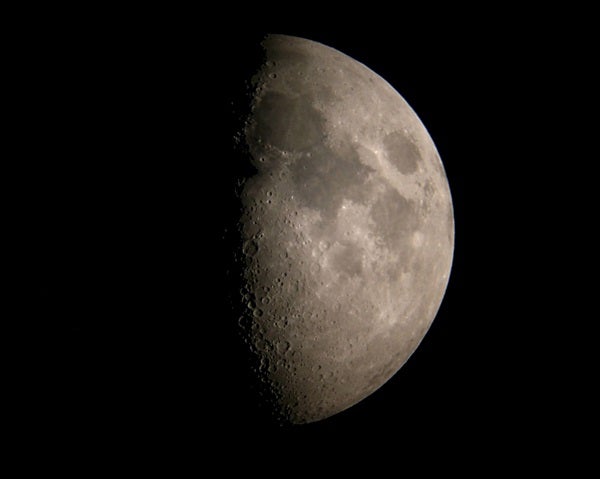What was the first sky object you ever targeted with a telescope? If you’re typical of most backyard astronomers, you chose the Moon. Brightest and easiest to find of the night sky’s many offerings, Earth’s only natural satellite is the perfect destination for that maiden telescopic voyage. Four centuries ago (November 30, 1609, by most accounts), Galileo launched his astronomical career by observing the Moon with a homebuilt refractor.
He wasn’t the first. The English astronomer Thomas Harriot earned that distinction by directing a telescope moonward 4 months earlier. However, Harriot didn’t immediately publish a description of what he saw.
When Galileo turned his attention to the Moon, he expected to capture a closeup view of divine perfection. The prevalent philosophical and religious teachings of his time stated in no uncertain terms that the Moon, being a heavenly body, was perfectly spherical and flawlessly smooth. To be sure, dark regions could be seen with the unaided eye, but these were dismissed as areas of differing density. What Galileo saw as he peered into the eyepiece was unexpected and unsettling, prompting him to continue observing the Moon well into December 1609.
In Sidereus Nuncius (“Starry Messenger”), published several months later, Galileo wrote: “I have been led to the opinion and conviction that the surface of the Moon is not smooth, uniform, and precisely spherical as a great number of philosophers believe it (and the other heavenly bodies) to be, but is uneven, rough, and full of cavities and prominences, being not unlike the face of the earth.” Galileo had discovered several mountains and valleys and innumerable craters on the Moon. The cosmos had lost perfection.
The Moon’s imperfections are what make it such a compelling telescopic sight. The lunar landscape, replete with majestic peaks jutting miles above the cratered surface, presents observers with an unforgettable vista. No telescopic scene except, perhaps, Saturn is more likely to evoke a gasp of awe from the first-time sky gazer.
There are a number of useful Internet resources for those of you who are happily afflicted with Moon Madness. Two of my favorite Moon-related web sites are Lunar Republic (www.lunarrepublic.com) and Inconstant Moon (www.inconstantmoon.com). Each site offers a free Moon atlas in which numerous key lunar features are identified. For those of you who want to delve more deeply into the story of Galileo’s observations of the Moon, try Tom Pope’s web site at www.pacifier.com/~tpope/Moon_Page.htm.
And, of course, the StarDome pullout at the center of each month’s issue of Astronomy provides a monthly Moon phase calendar for your convenience.
It’s unfortunate that the Moon is considered a friend of the beginner but an expert’s enemy. After the Moon’s novelty wears off, we tend to bypass it in favor of the planets, eventually moving on to deep-sky objects. It’s then that the Moon assumes the role of an unwelcome invader whose brilliant light floods the heavens with nature’s version of light pollution.
If you’re a novice backyard astronomer, take your telescope outside and enjoy the thrill of a lunar voyage. Start by identifying the Moon’s dark maria, or seas, and then move on to some of the larger craters. If you’re one of those veterans who grumble whenever moonlight prevents you from touring the Coma-Virgo Galaxy Cluster, put aside the charts and turn your attention to the Moon. Rediscover the excitement you felt when you first laid eyes on its cratered terrain. Reacquaint yourself with an old friend!
Questions, comments, or suggestions? E-mail me at gchaple@hotmail.com. Next month: a Galileo observing technique you don’t want to repeat! Clear skies!
Explore an imperfect Moon
May 2009: Re-create a Galilean scope
See an archive of Glenn Chaple’s observing basics











